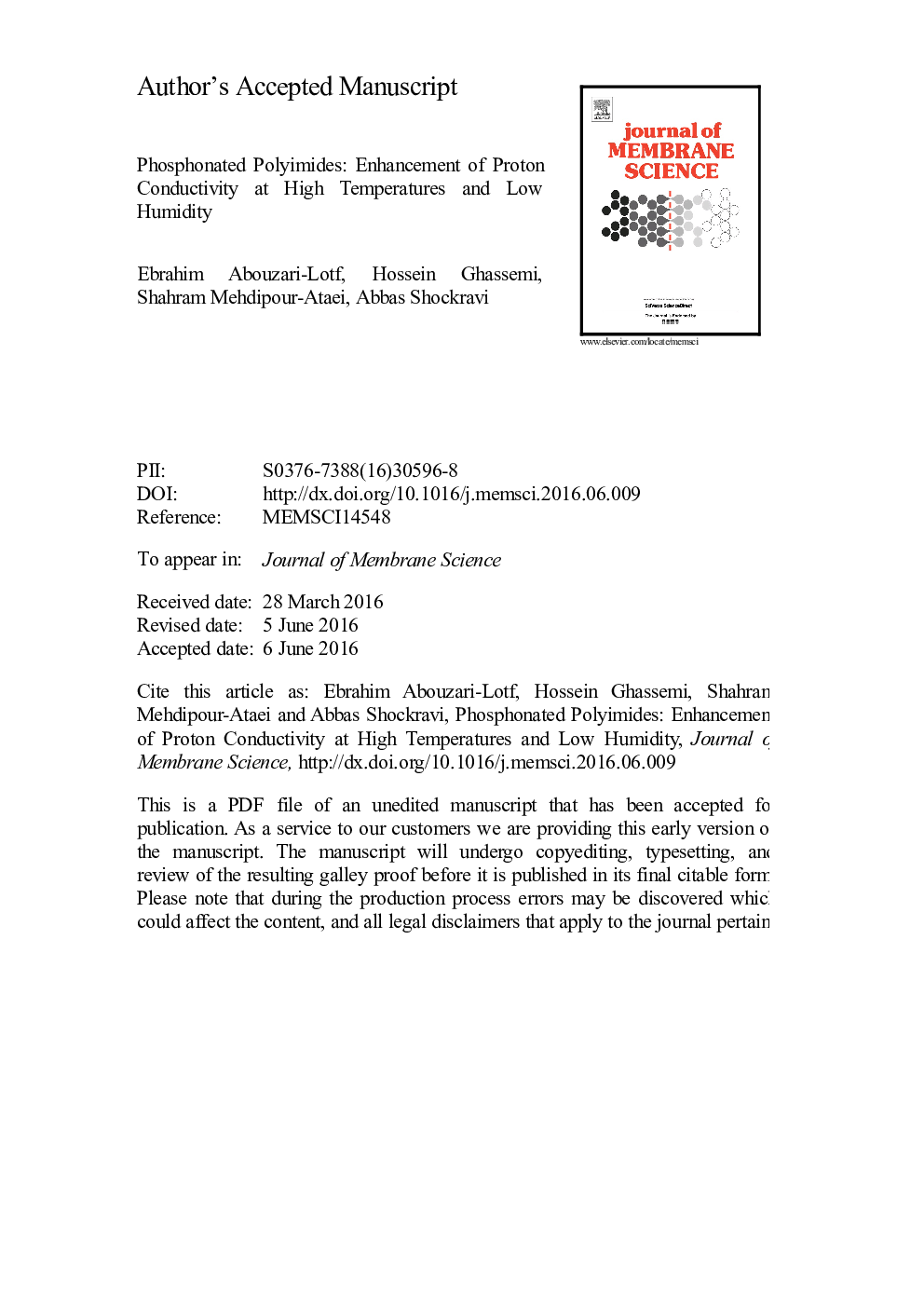| Article ID | Journal | Published Year | Pages | File Type |
|---|---|---|---|---|
| 7020581 | Journal of Membrane Science | 2016 | 25 Pages |
Abstract
A new class of highly conductive and durable polymer electrolyte membranes have been developed for fuel cell applications under elevated temperature and/or low relative humidity (RH). Highly phosphonated and fully aromatic diamine monomer was prepared via three-step high-yielding procedure from previously synthesized phosphonated bisphenol: halogen displacement of 1-fluoro-4-nitrobenzene, reducing of nitro groups, and hydrolysis of phosphonate ester groups. A series of phosphonated copolyimide ionomers with ion exchange capacity (IEC) of 2.4-4.6 mequiv gâ1 were obtained by a typical polycondensation reaction followed by solution casting to form transparent and flexible membranes. Proton conductivity of the phosphonated membranes was comparable to that of the commercial perfluorinated ionomer at 100% RH. Typically, the conductivity value of up to 125 mS cmâ1 was obtained for the membrane with IEC of 3.5 mequiv gâ1 at 100 °C. However, by reducing the relative humidity the merits of phosphonated polyimides became more evidence and their dry state conductivity was 1-3 order of magnitudes higher than Nafion 115 and substantially higher than the values reported for phosphonated membranes. Thermogravimetric analysis and long-term proton conductivity study of phosphonated copolyimides at high temperatures (up to 160 °C) and low humidity confirmed small amount of undesired self-condensation of phosphonic acid groups compared with other phosphonated membranes.
Related Topics
Physical Sciences and Engineering
Chemical Engineering
Filtration and Separation
Authors
Ebrahim Abouzari-Lotf, Hossein Ghassemi, Shahram Mehdipour-Ataei, Abbas Shockravi,
